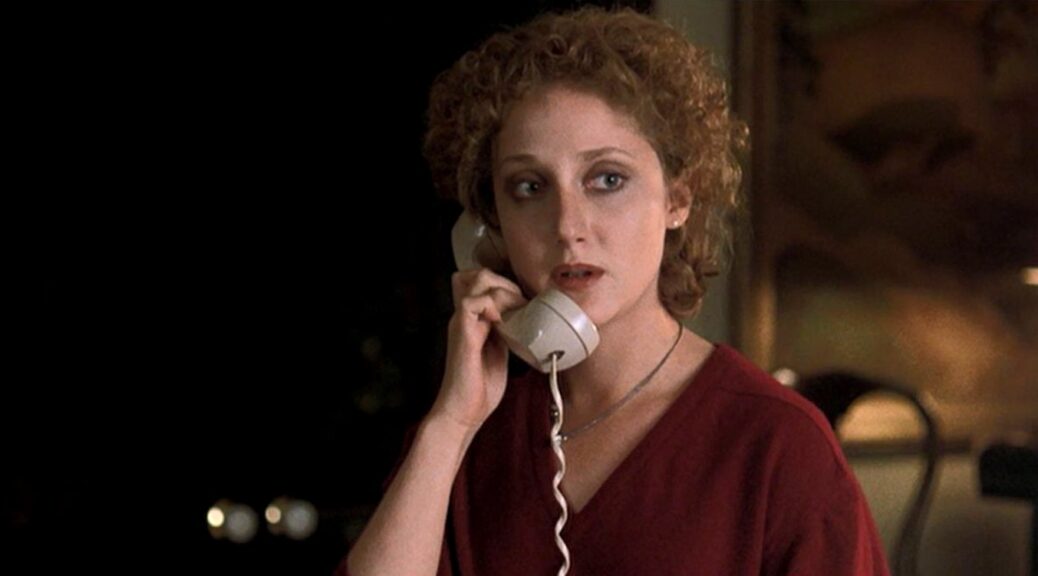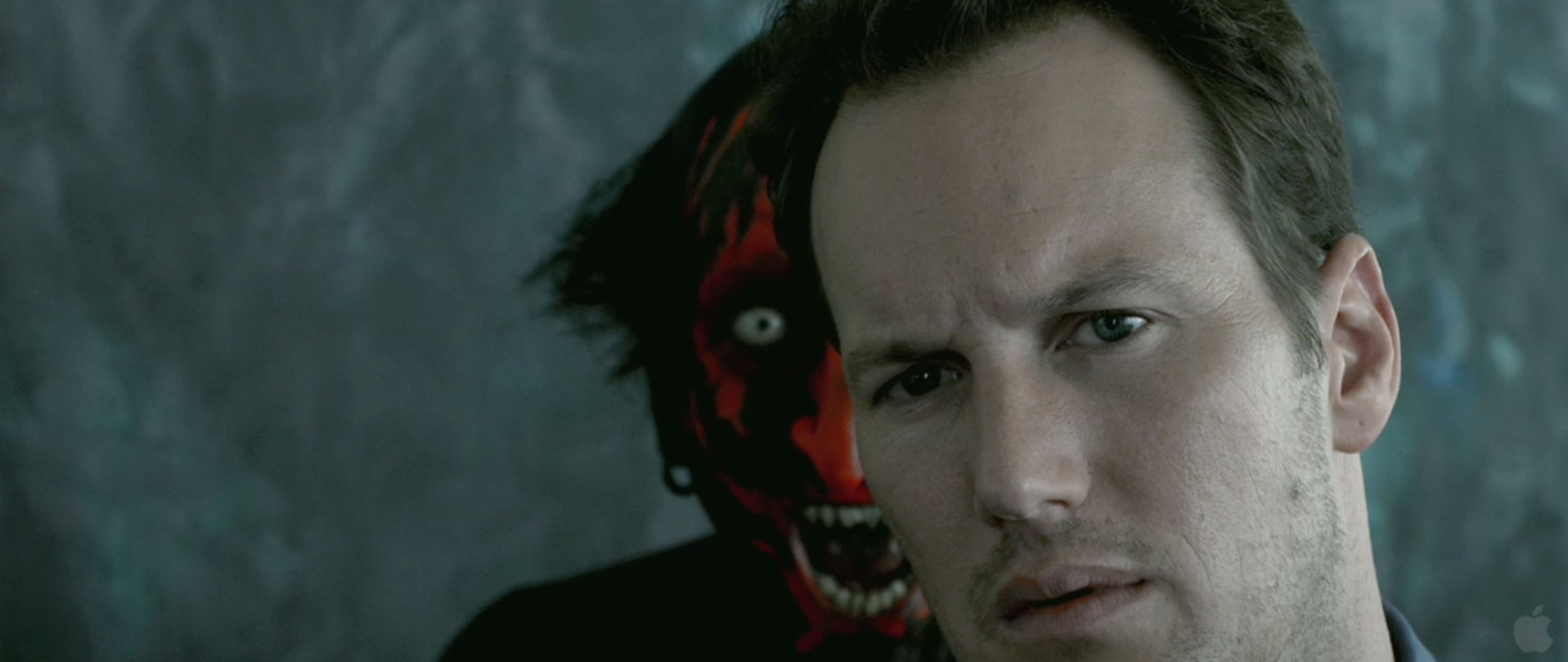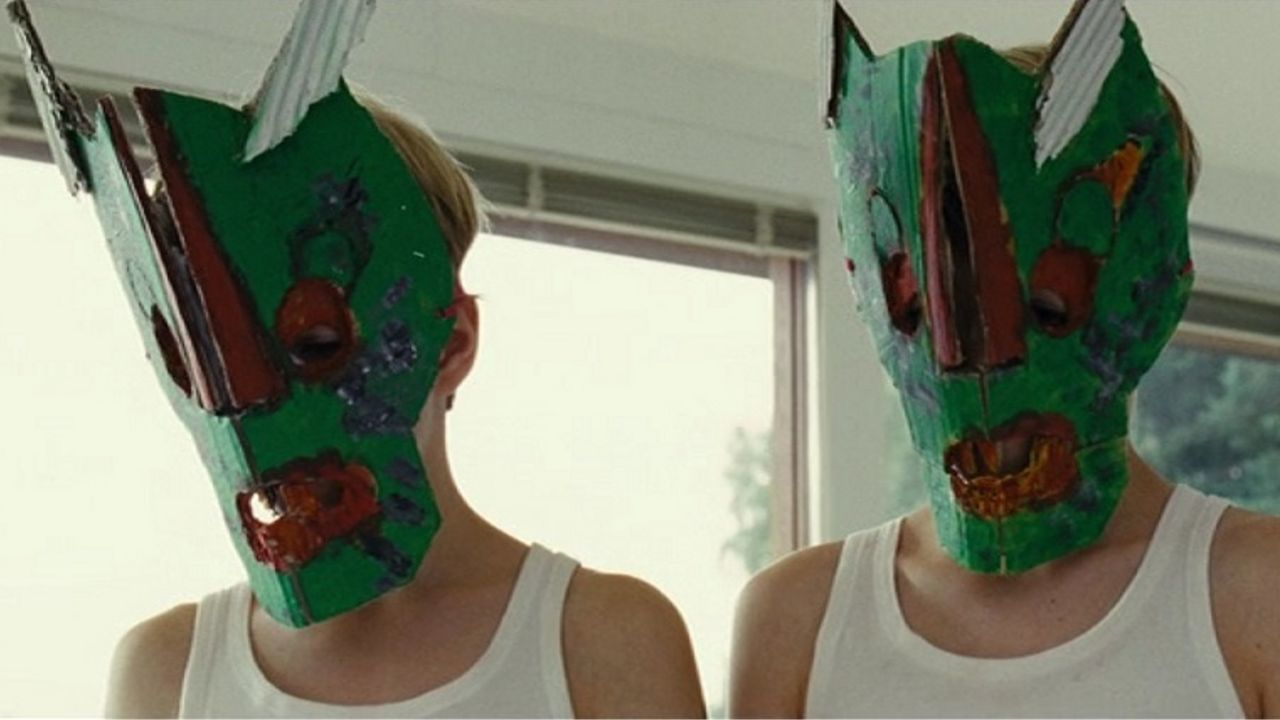Aaah, the old “video nasties” — movies banned from view to protect us from the untold damage they would do, their ruinous images. The idea that watching something could be our end is a fantastic source for horror. Horror filmmakers have taken that idea and run wild with it. Watching could make you mad. Making one could make you mad. Hell, just listening could do irreversible damage!
Thanks to Greg Hansberry of The Empty Coffin podcast for filling in for George this week! Today we celebrate the nasty videos that have propelled some of our favorite flicks.
6. Red Rooms (2024)
True crime culture. Serial killer groupies. The Dark Web. Does all of it seem too grim, too of-the-moment, too cliché to make for a deeply affecting thriller these days? Au contraire, mon frère. Québécois Pascal Plante makes nimble use of these elements to craft a nailbiter of a serial killer thriller with his latest effort, Red Rooms.
Plante expertly braids vulnerability and psychopathy, flesh and glass, humanity and the cyber universe for a weirdly compelling peek at how easily one could slide from one world to the other.
His real magic trick—one that remarkably few filmmakers have pulled off—is generating edge-of-your-seat anxiety primarily with keyboard clicks, computer screens and wait times. But the tension Plante builds—thanks to Juliette Gariépy’s precise acting—is excruciating. They keep you disoriented, fascinated, a little repulsed and utterly breathless.
5. Berberian Sound Studio (2012)
Madman Peter Strickland (In Fabric) made an entire film about sound, and it gets so much right. Not just about sound—about the era, the equipment, giallo sensibilities and moviemaking.
Strickland, working with a sound department of 34, creates a psychological experience through sound almost exclusively. The amazing Toby Jones plays Gilderoy, flown in specifically to helm the sound in a horror movie.
“This isn’t a horror movie. This is a Santini movie!”
Gilderoy’s arc is profound, and sound is our only window into what is changing him. We don’t see what he sees, only his reaction to it and the sound of it that makes his psychological breakdown believable.
4. The Ring (2002)
Gore Verbinski’s film achieves one of those rare feats, ranking among the scarce Hollywood remakes that surpasses the foreign-born original, Japan’s unique paranormal nightmare Ringu. Verbinski’s film is visually arresting, quietly atmospheric and creepy as hell.
This is basically the story of bad mom/worse journalist Rachel (Naomi Watts) investigating the urban legend of a videotape that kills viewers exactly seven days after viewing.
The tape itself is the key. Had it held images less surreal, less Buñuel, the whole film would have collapsed. But the tape was freaky. And so were the blue-green grimaces on the dead! And that horse thing on the ferry!
And Samara.
From cherubic image of plump-cheeked innocence to a mess of ghastly flesh and disjointed bones climbing out of the well and into your life, the character is brilliantly created.
3. Censor (2021)
Writer/director Prano Bailey-Bond crafts such a stylish, unsettling film with her ode to Britain’s “Video Nasty” era and the theme that censoring something ugly can somehow make it disappear.
Naimh Algar astonishes as Enid, a film censor whose childhood trauma and guilt resurface when a producer (Michael Smiley) invites her to watch a movie. A mystery—and Enid’s fragile sanity—unravel as Bailey-Bond develops a murky, fantastical and wildly horrific atmosphere that leaves you guessing and disturbed.
2. Videodrome (1983)
Videodrome was the last true horror and truly Canadian film in David Conenberg’s arsenal, and it shows an evolution in his preoccupations with body horror, media, and technology as well as his progress as a filmmaker.
James Woods plays sleazy TV programmer Max Renn, who pirates a program he believes is being taped in Malaysia – a snuff show, where people are slowly tortured to death in front of viewers’ eyes. But it turns out to be more than he’d bargained for. Corporate greed, zealot conspiracy, medical manipulation all come together in this hallucinatory insanity that could only make sense with Cronenberg at the wheel.
Deborah Harry co-stars, and Woods shoulders his abundant screen time quite well. What? James Woods plays a sleaze ball? Get out! Still, he does a great job with it. But the real star is Cronenberg, who explores his own personal obsessions, dragging us willingly down the rabbit hole with him. Long live the new flesh!
1. Peeping Tom (1960)
Director Michael Powell’s film broke a lot of ground and nearly ended his film career. People tend to react badly to horror movies that unnerve them, which is really odd given that this is the entire point of the genre. Peeping Tom pissed everybody off, maybe because—like Michael Haneke’s films Funny Games—Peeping Tom implicates you in the horror.
Mark (Karlheinz Bohm) had a difficult childhood, developing a bit of a voyeuristic hobby to help him cope. He starts off with prostitutes, filming them, capturing their terror as he kills them. He’s a voyeur, but who can throw stones? Didn’t every one of us who’s ever watched this film— or any other horror movie, for that matter—sign up to do exactly what Mark was doing?
Bohm’s great success is in making Mark unsettlingly sympathetic. Powell’s is in using the audience’s instincts against us. Bohm makes us feel bad for the villain, Powell makes us relate to the villain. No wonder people were pissed.









